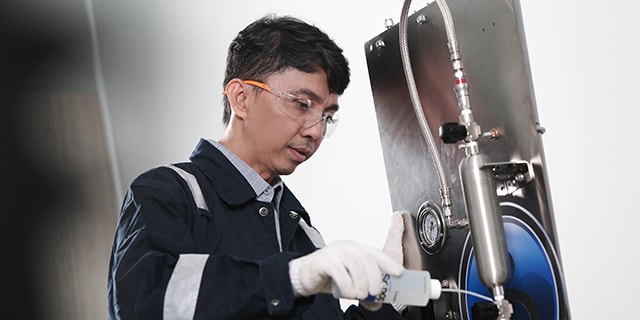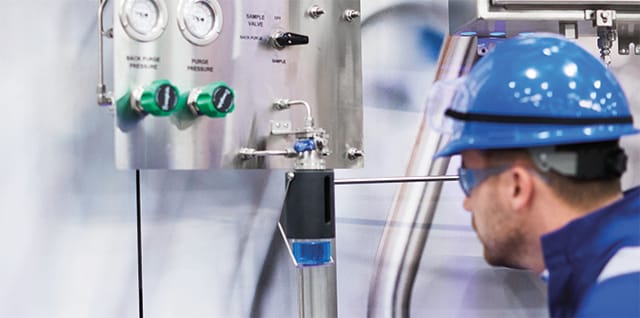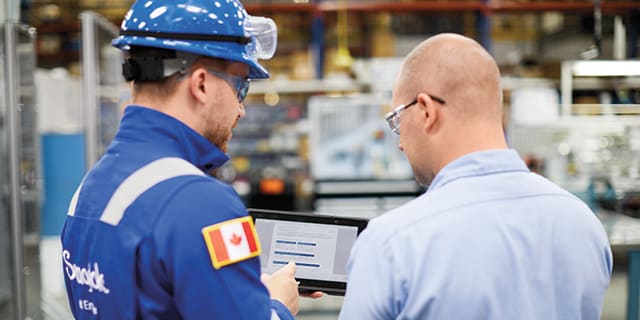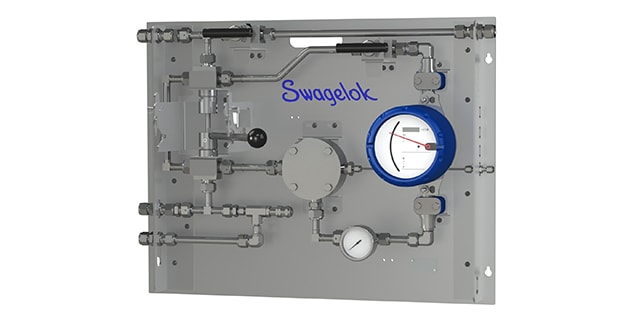Boost Quality by Selecting the Right Grab Sampling System

Boost Quality by Selecting the Right Grab Sampling System
Stacey Phillips, Regional Area Manager, Field Engineering, (Americas)
Whether determined by customer specification, governmental regulation, or other criteria, end-use products from many oil and gas or chemical refining operations typically require precise chemical composition. And if your product does not meet the criteria, it can mean excessive waste and cost for your organization.
Maintaining chemical makeup precision often depends on sound sampling systems and best practices, which are established well before your product gets into the customer’s hands. One of the most common and cost-effective forms of process sampling is called grab sampling, aka closed-loop sampling, and involves collecting a process sample in an appropriate container before transporting it to a lab for analysis. Representative lab analysis, however, depends on representative samples—making grab sampling system selection and sample collection an important part of your operations. Industrial grab sampling systems are typically available as either cylinder or bottle collections and can validate process conditions to ensure your product is meeting quality and emissions requirements.
Successful grab sampling is dependent upon selecting the right system for your process, along with technicians following safety and operational best practices when performing the task. Here are a few things to think about:
Grab Sampling System Selection
A wide variety of grab sampling systems and configurations exist in the marketplace. Which to choose? Much depends on your application’s specific needs. Here are some criteria to consider:
- Pressure. Whether you are using a cylinder or bottle collection, the system’s maximum rated pressure must not be exceeded.
- Temperature. Cylinder and bottle systems have a maximum, and sometimes minimum, fluid operating temperature.
- Hazardous Material. The grab sampling system selected must protect the operator and the environment alike from the process fluid. Certain chemicals require strict leak or chemical protection.
- Materials of Construction. The materials used in your chosen closed loop system must also be compatible with the process fluid. Ensure your supplier is using high-quality material that will not interfere with sample accuracy.
- Surface Treatments. Certain surface treatments can reduce absorption and adsorption of the sample fluid into metallic surfaces, leading to a more representative sample.
- Purge. Some chemicals may leave behind residue or contaminates if not flushed from the system. Selecting a purge option provides a means to introduce a purge fluid to remove contaminates from sample lines.
Choosing the Right Container for Transport
On its journey from the process stream to the lab, a sample must remain in the state in which it was obtained, but a variety of factors can influence sample stability. For example, some chemicals will evaporate or fractionate if they are not maintained under a certain pressure. Even if that is not the case, a more stable sample placed in an open container can invite contamination.
Therefore, choosing the right container type for your sample is important. There are a couple of standard, reliable container options depending on your application:
- Bottle containers. Sample bottles can simplify sample collection and transport for non-pressure-containing liquid samples. They are also a lower cost option that can be easily replaced when necessary. Certain brands offer self-sealing septum caps, allowing the sample to be drawn and transported without the risk of spillage or evaporation. Elsewhere, tapered bottle shrouds can enable proper septum and needle alignment, preventing accidental spillage or needle damage.
- Cylinder containers. Sample cylinders should be used when capturing a gas or liquid that is under pressure and can protect sample integrity by preventing evaporation or chemical fractionation. Sample cylinder containers are made with seamless tubing for consistent wall thickness, size and capacity. The smooth internal neck transition eliminates trapped fluid and makes them easy to clean in the lab and reuse in the field—reducing costs.
No matter your industry or application, choosing the right grab sampling system and following best practices for sample collection can help ensure sample accuracy, therefore ensuring end-use product quality.
Interested in learning more? Swagelok can help you obtain the right grab sampling system for your needs.
Related Articles

How to Fix Common Grab Sampling Deficiencies
There are several common fluid systems that successful plant operation depends on and outsourcing their fabrication can be highly beneficial if you are short on resources.

Do’s and Don’ts for Sampling System Accuracy
Follow these do’s and don’ts to obtain more accurate, representative samples from your industrial sampling system.

Sample Probe, Calibration & Switching Modules + More to Simplify Sampling
Learn how standard pre-engineered subsystems can bring efficiency and consistency to your operations by reducing the manual installation and assembly of multiple parts.

